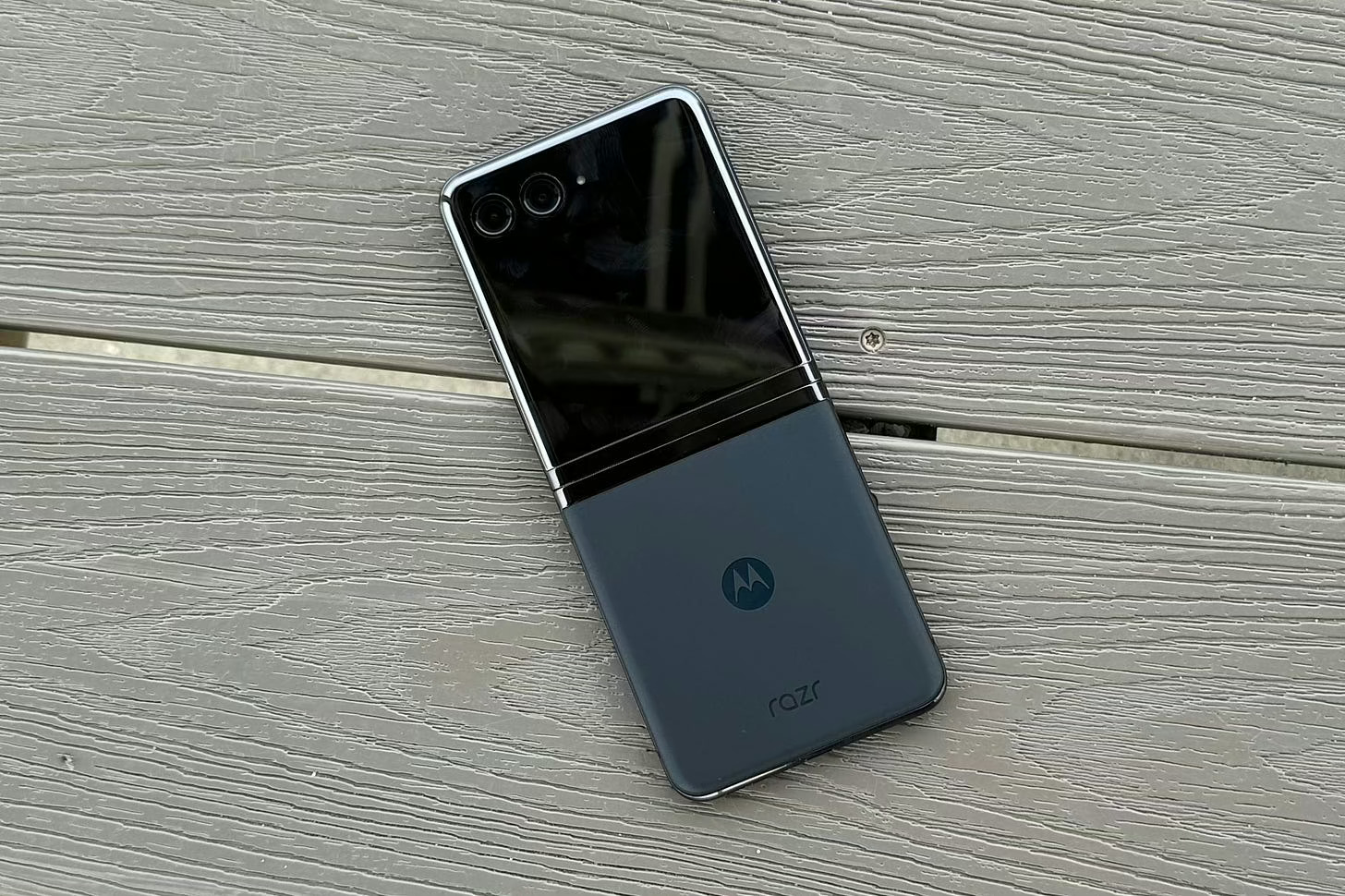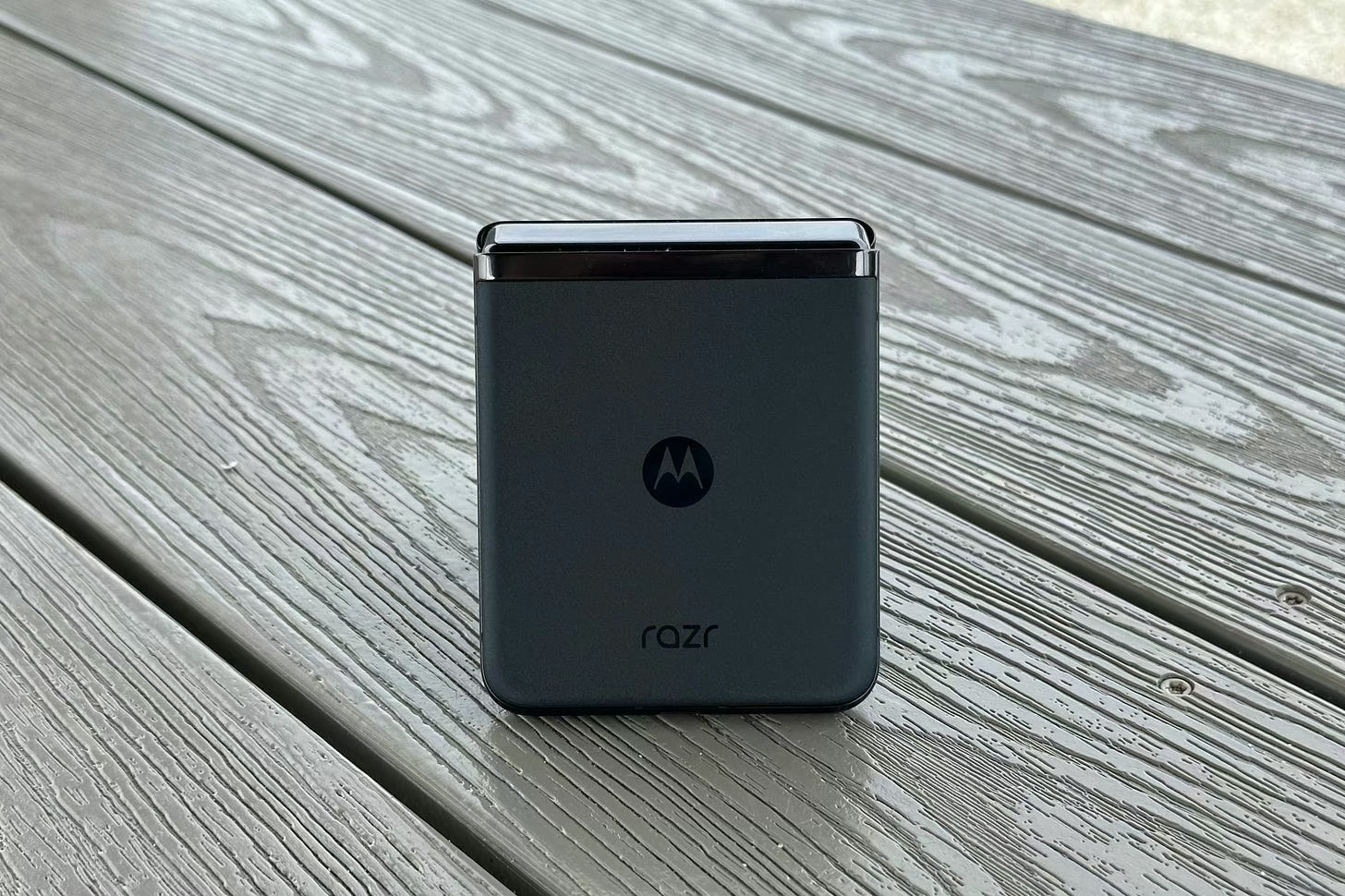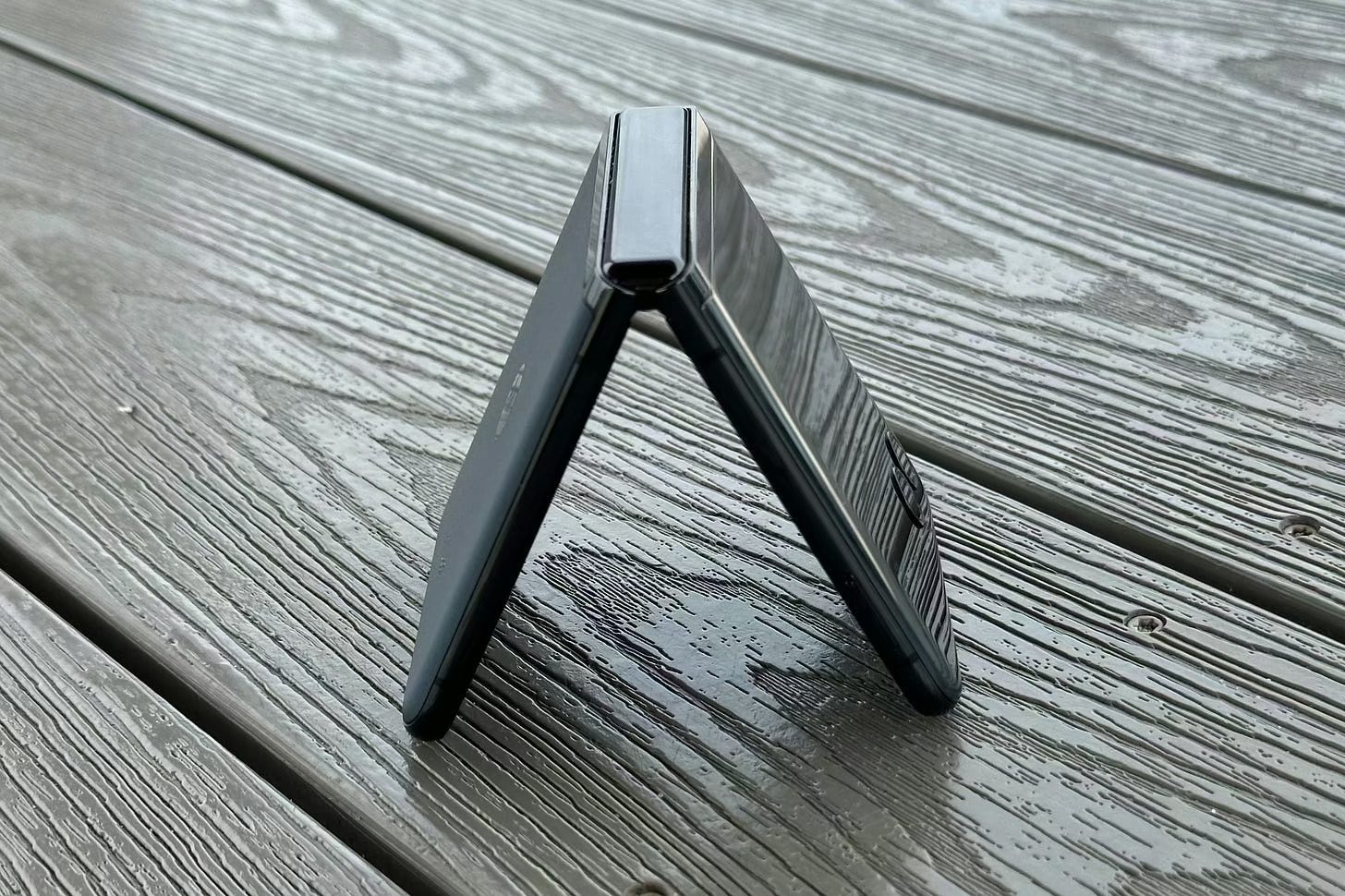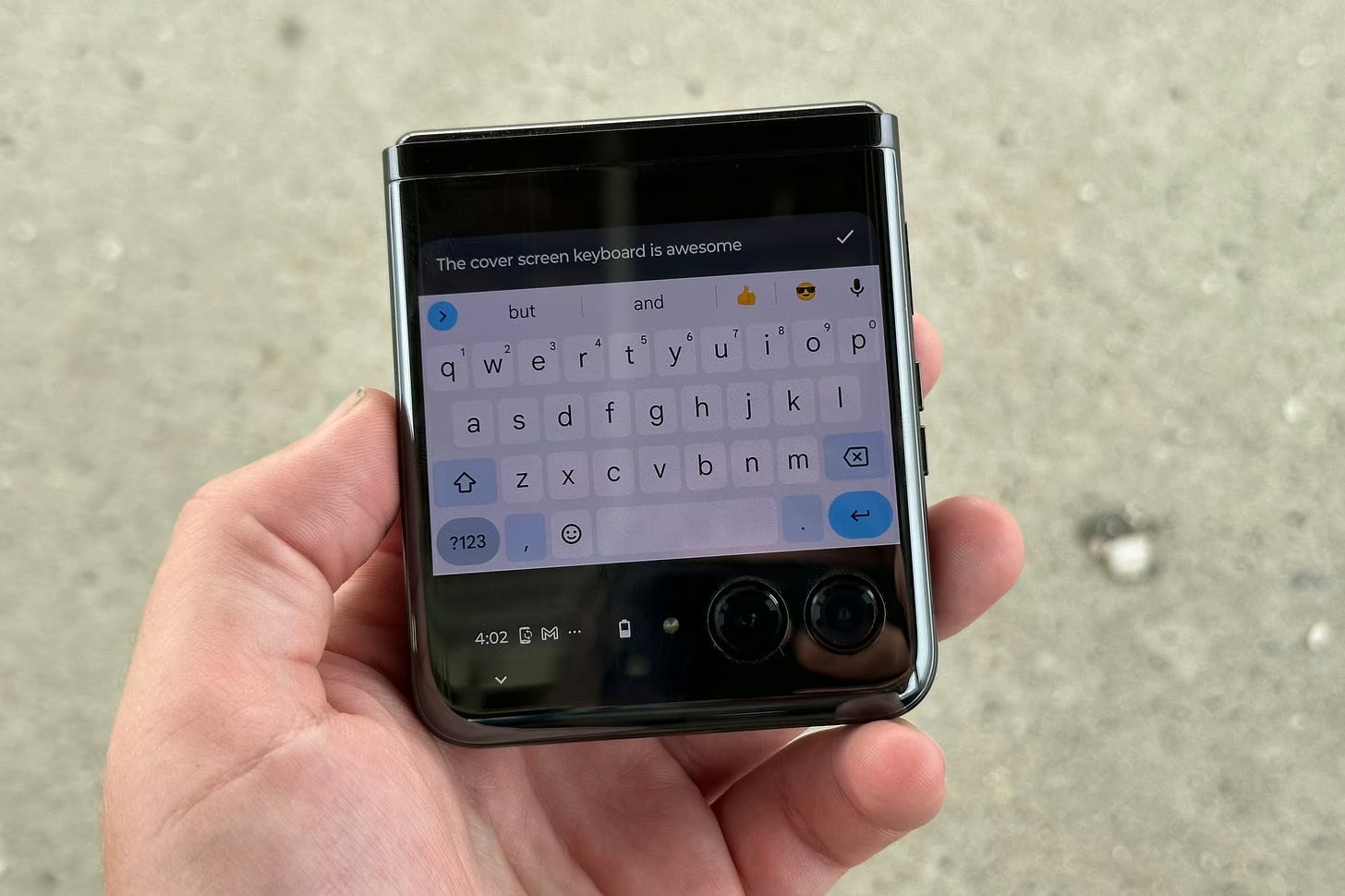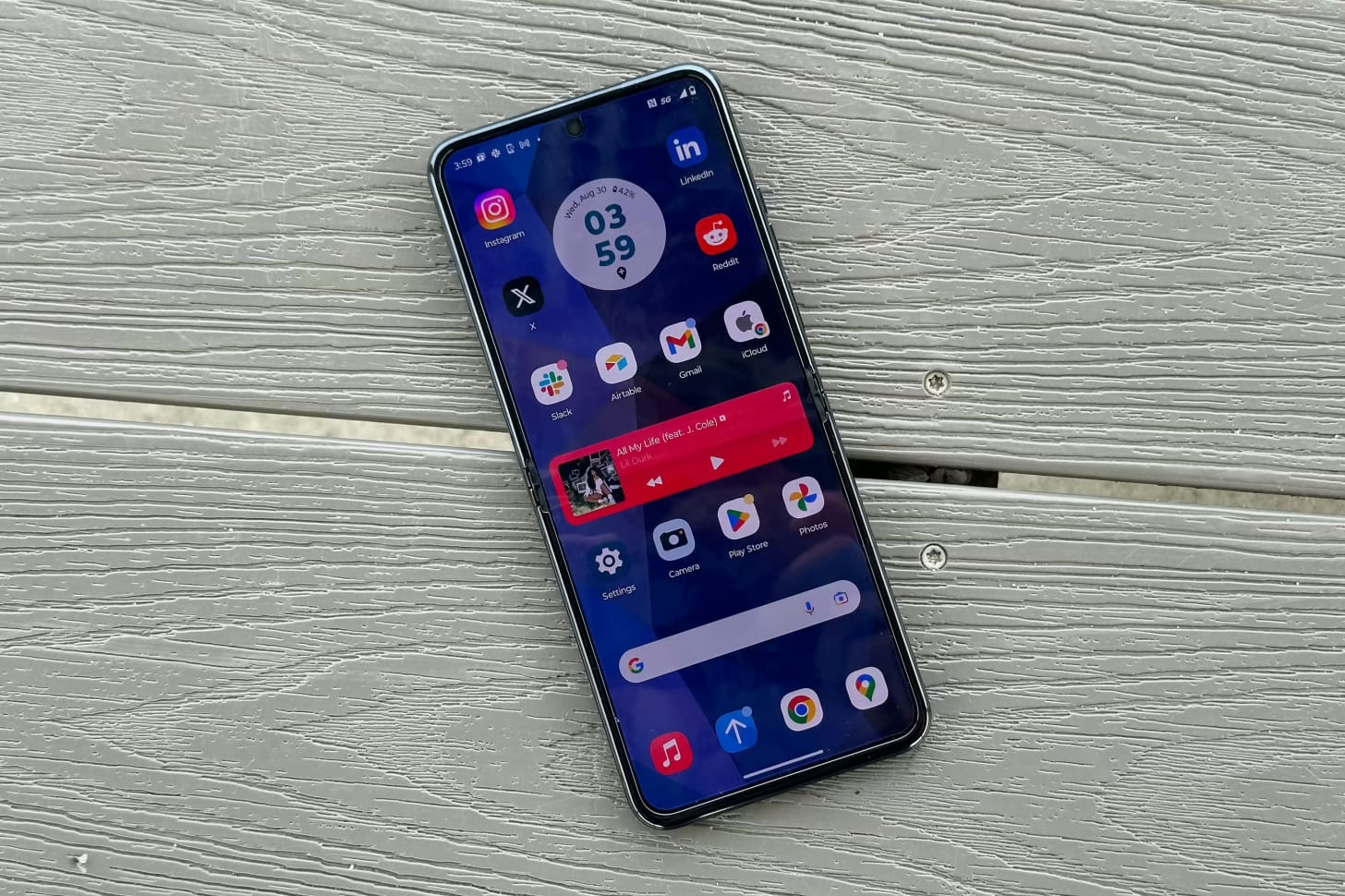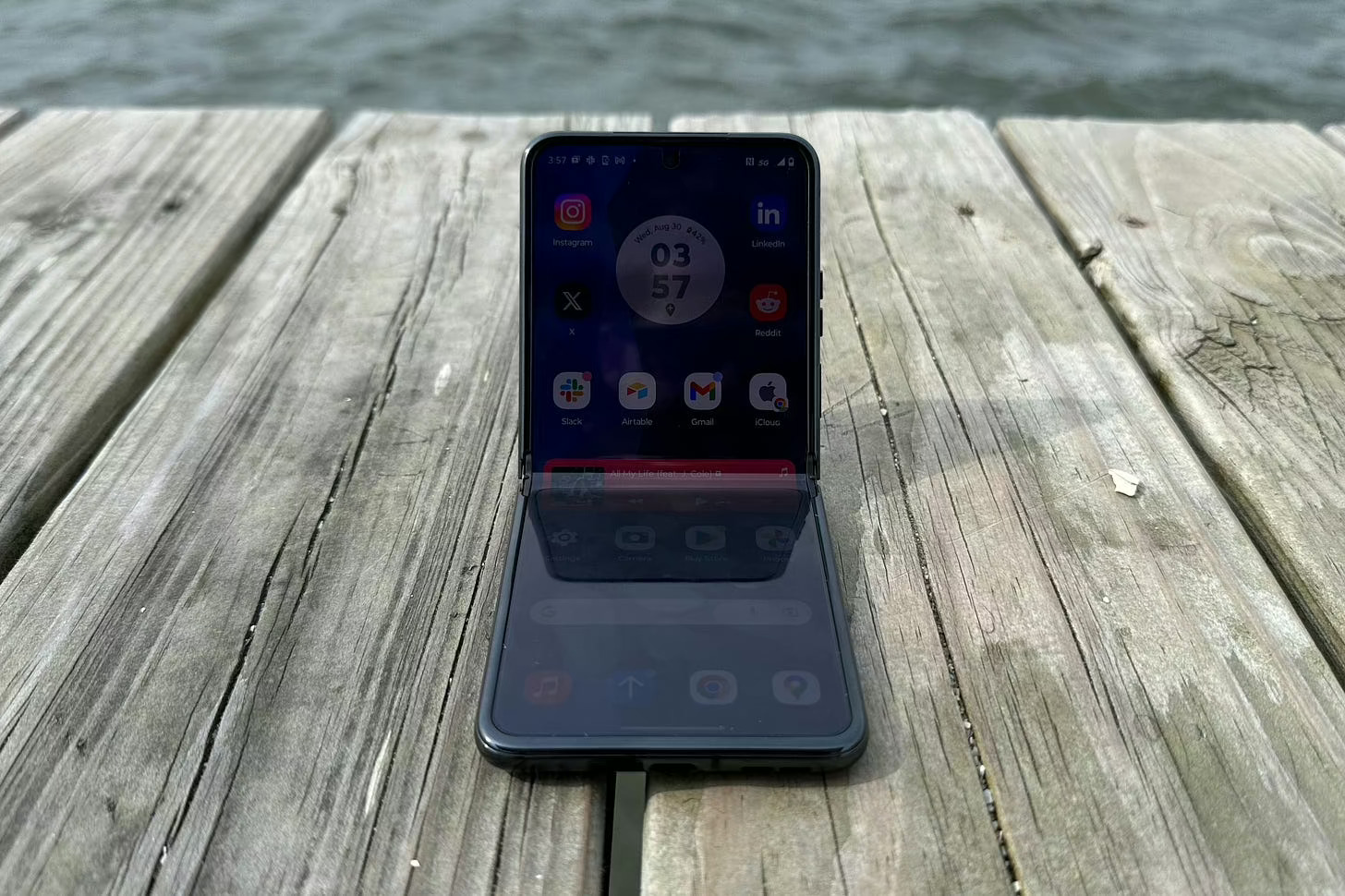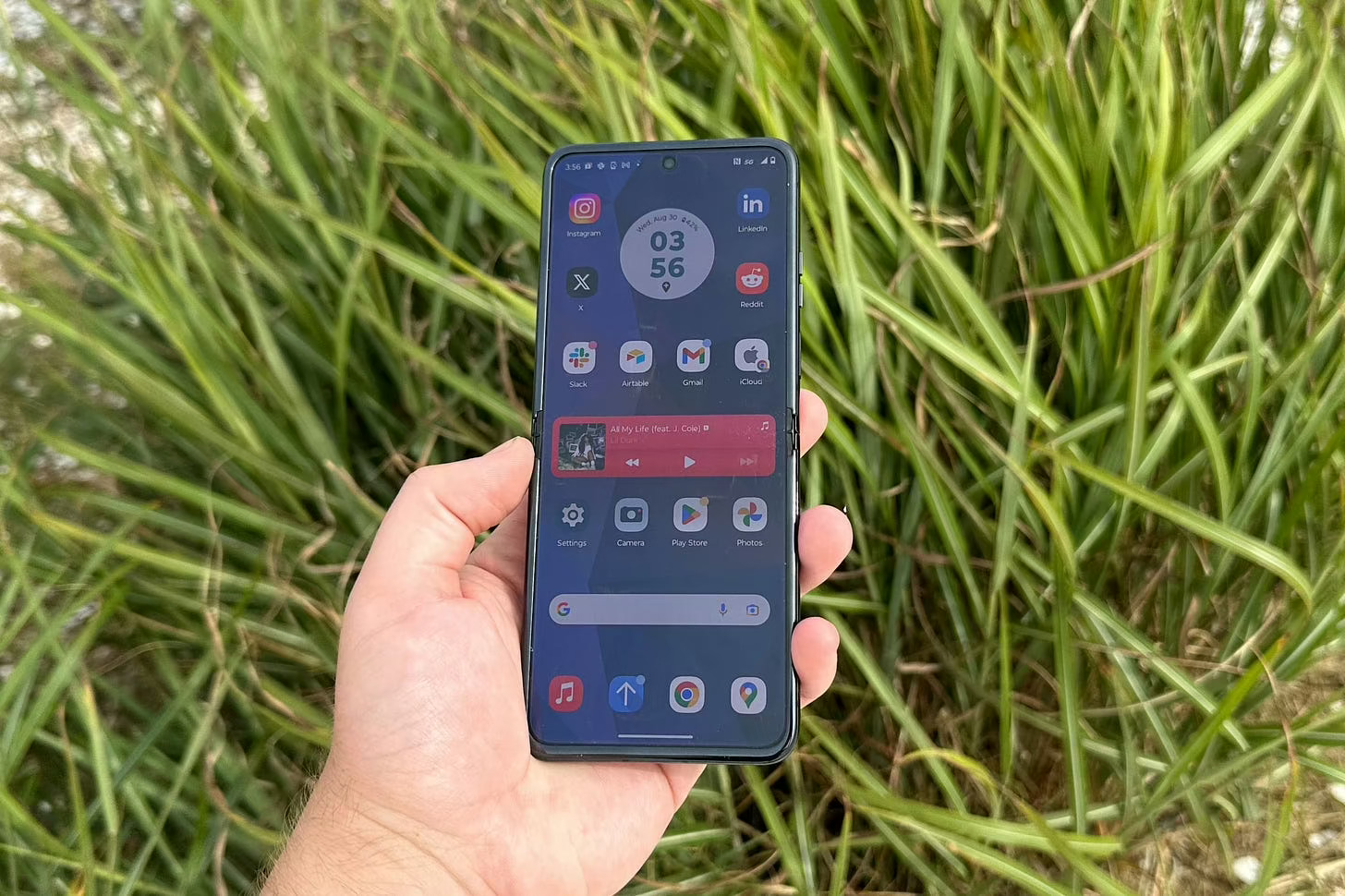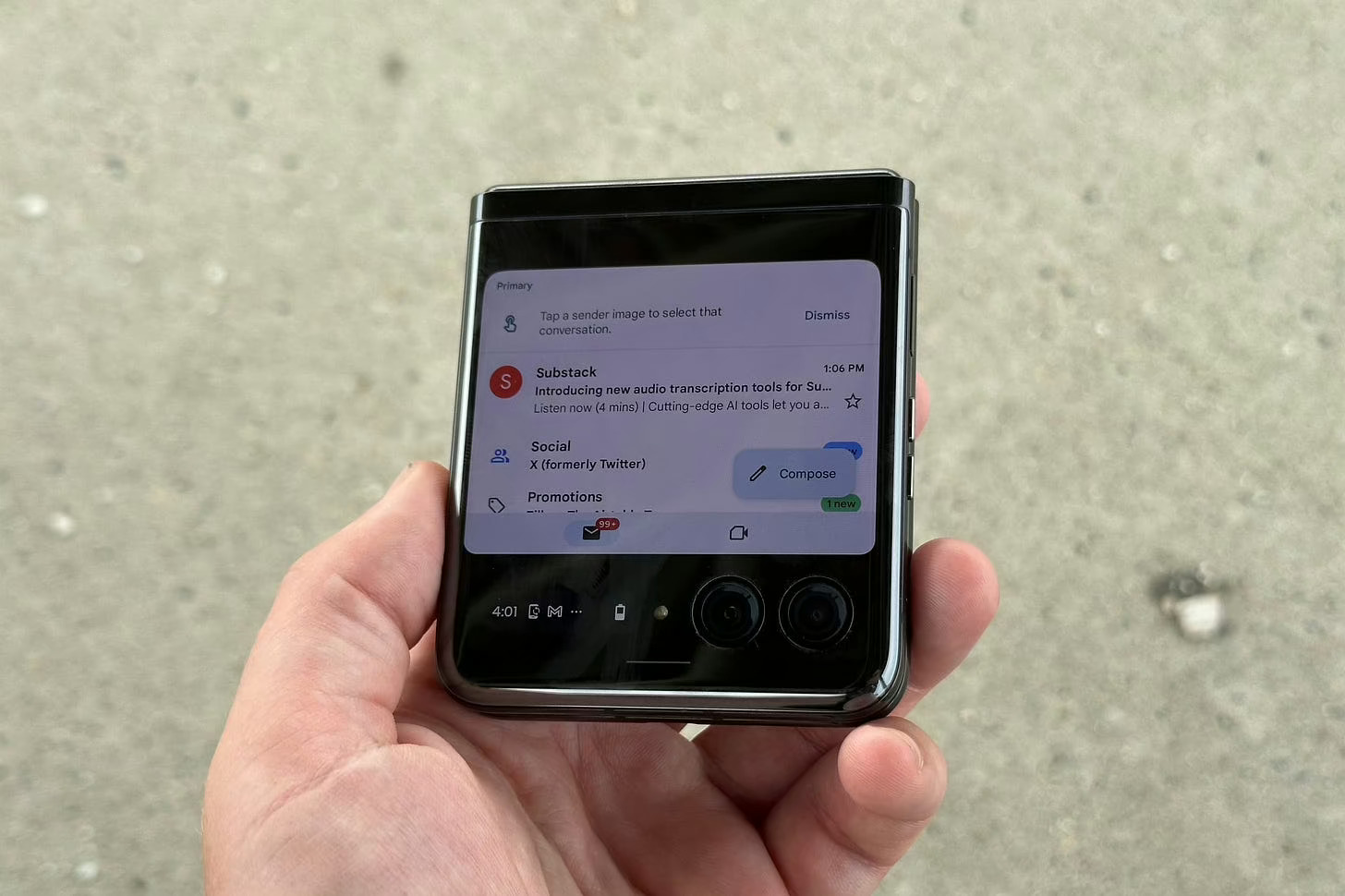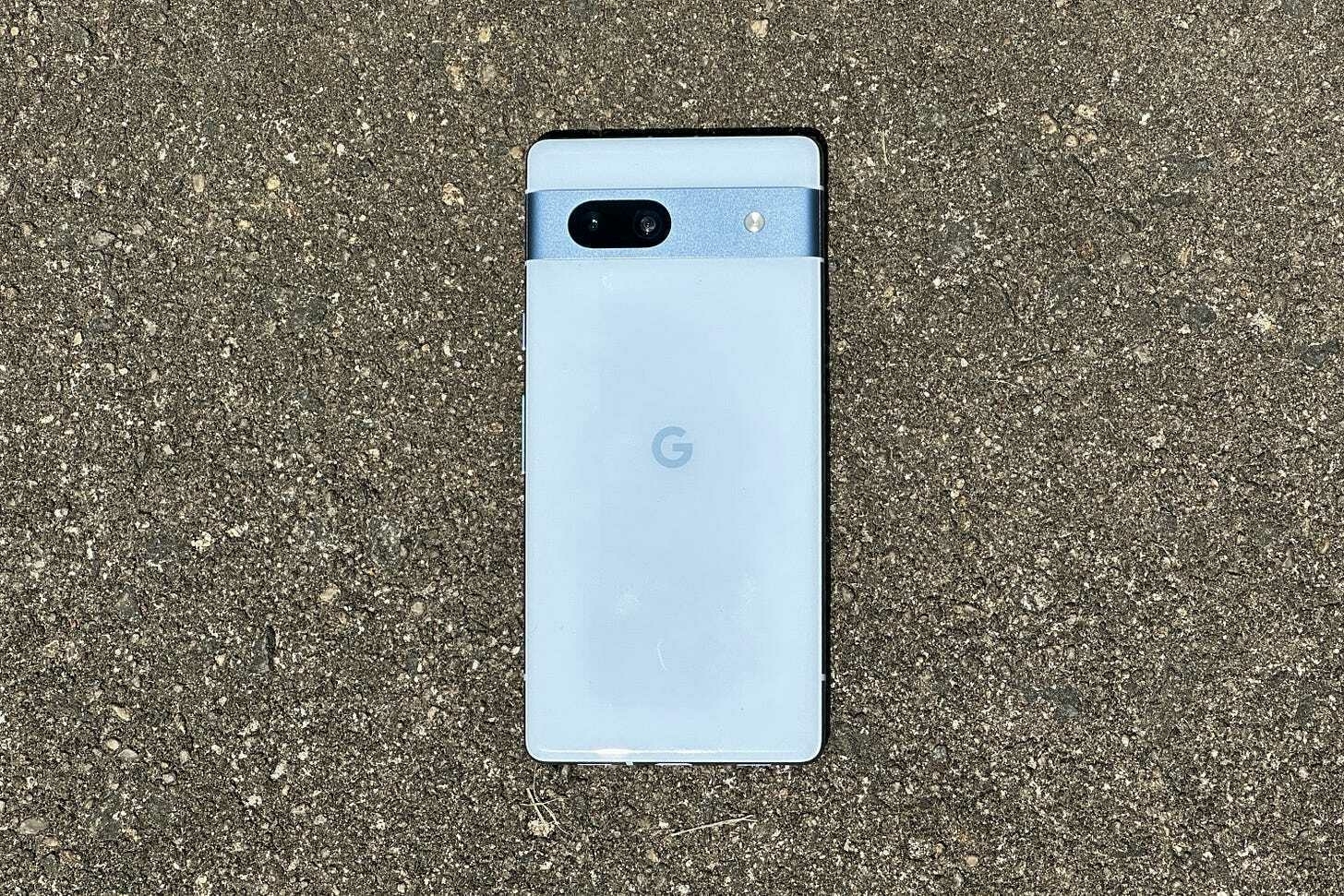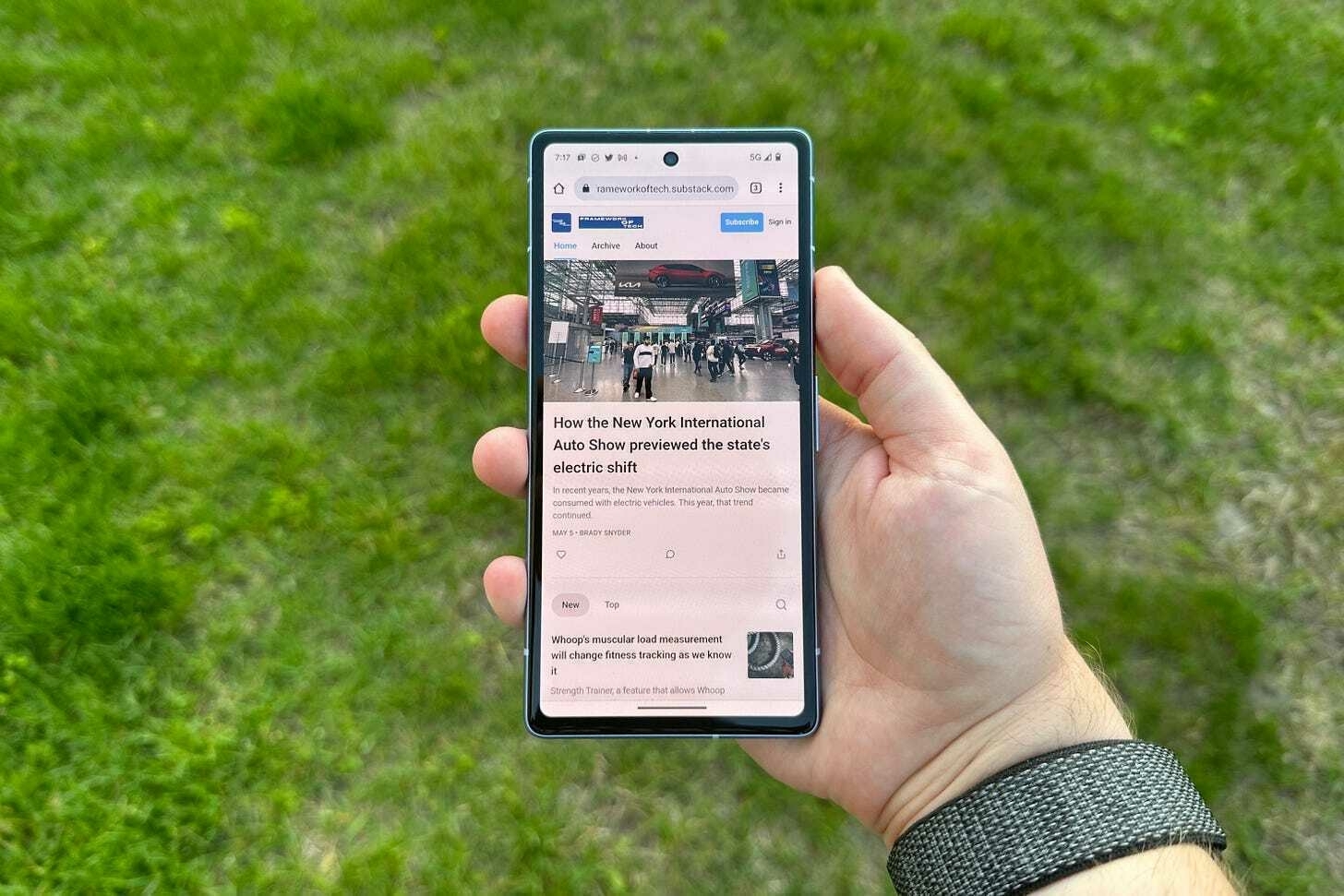🤖 Android
Motorola Razr+ (2023) review: Fantastic software overcomes inferior hardware
After years of being discontent with the tiny cover screens found on foldable phones, Motorola was the first to take the leap with a full-screen cover display. The company took a gap year and didn’t release a Razr flip phone in North America in 2022, but triumphantly returned with the Motorola Razr+ (2023). It ditches the iconic design of the older Razr smartphones in favor of a more modern and familiar one, adds a flagship processor, and features improved cameras.
But in the time since the Razr+ first debuted, Samsung unveiled its latest Galaxy Z Flip 5. Both phones are competing for the title of best clamshell foldable, and Samsung’s inclusion of a larger cover screen on the Z Flip 5 means that the Razr+ isn’t as unique as it once was. You might be inclined to choose the Z Flip 5 as your clamshell foldable because of the 5+ years Samsung has had to refine its hardware, and it’s true, Samsung’s hardware is better. If you really want an expansive and functional cover screen, though, Motorola’s software shines in the same areas where Samsung’s disappoints.
Design and build quality
Solid overall, but the hinge leaves much to be desired
With modern clamshell foldables, there isn’t much to look at beyond screens. The 3.6-inch display found on the cover screen takes up the entire front of the phone when closed. On the inside, you’ll find a 6.9-inch panel, which covers the inside of the Razr+. The only surface you can spot on the Razr+ that isn’t the screen is the back of the phone, and this features a glossy Motorola logo and Razr wordmark. You can choose to get the Razr+ in Glacier Blue or Viva Magenta, but I chose Infinite Black because most of the phone is screen anyway.
Motorola went with a curved design for the Razr+, which is different from the foldable we’ve seen from Samsung. Some might prefer this look, but I’ve found myself wishing that the Motorola Razr+ had a more boxy design. That’s because when closed, the curved edges of the phone come together and form an empty groove. If you’re used to carrying slab phones, this dead space will feel unnatural at first. Since part of this phone’s appeal is the usability of the cover screen, this design choice — whether you love it or hate it — will be a big deal.
Motorola seems to have produced a fairly-durable phone, but that remains to be seen in the long term. Though the Razr+ has an IP52 certification that leaves a bit to be desired in terms of water-resistance, it’s one of the few foldables to offer dust-resistance. That should keep dust and debris out of the hinge and screen assembly, which could prevent inadvertent damage. However, the ‘2’ in that IP rating means that anything more than light rain could cause the Razr+ to break.
The hinge is easily the worst part of this phone, and it’s something I’ve struggled to get over throughout my time using it. Samsung’s foldable hinges have a lot of resistance, and this means you can prop it up at any angle. Motorola’s hinge on the Razr+ has a lot of resistance too, but all the wrong kinds.
The Razr+ really only wants to be completely closed or completely open, and trying to set it at any other angle will cause the hinge to flop over. You can find a place at around 90-95 degrees where it’ll stay propped up, but this isn’t a great viewing angle for watching half-screen content. There’s no ‘flip factor’ here either — flipping the phone open with one hand is downright impossible.
I’ll share one key caveat here: the hinge’s shortcomings will be absolutely noticeable if you’ve used foldable phones before, but you probably won’t notice it if you’re used to the form factor.
Display
A cover screen you’ll actually want to use
The reality of daily-driving a foldable phone is that you’ll use the cover screen a lot more than you think. That’s true even with my Galaxy Z Fold 4, which is why I’m so frustrated that Samsung refuses to widen the external display. However, to my surprise, the cover screen on the Motorola Razr+ might be the best I’ve used on any foldable phone — big or small. People have complained that big slab phones are unwieldy, and have championed for ‘mini’ smartphones. But they aren’t the solution, foldables are.
With great software — which we’ll get to in a minute — the Razr+ cover screen is the most comfortable way to use a smartphone. It’s the perfect size for use with either one hand or two, and the best comparison to the feel I can give is that it’s like using an old GameBoy or DS. The combination of size, weight, and feel gives you complete control over the device. And to my surprise again, the 3.6-inch OLED panel is big enough for nearly all tasks. Some apps, like Apple Music, are difficult to use not because of the screen size because of the app’s optimization for small screens. That is an issue you will run into from time to time.
When you get to the main screen, you’ll be impressed with the display quality in good lighting conditions. It’s a 6.9-inch AMOLED panel that supports refresh rates up to 165Hz. The operating system feels fluid and there are special modes for gaming, but I don’t think you’ll notice the difference between 120Hz and 165Hz daily. Since the Razr+ uses the clamshell form factor, it’ll be taller and thinner than most slab phones. However, the 22:9 aspect ratio is easy to get used to, and it’s perfect for watching videos picture-in-picture while doing other things on your phone.
Brightness leaves a little bit to be desired, but the Razr+ looks good on paper. It’s rated for 1400 nits peak brightness on the main display and 1100 nits on the inner display, which is passable in 2023. However, I’ve found that folding screens are harder to see across the board in direct sunlight, and the Motorola Razr+ supports this.
Just take a look at the image above and see how dim the Razr+ looks at max brightness on a sunny day.
Software and performance
Basically stock Android, and that’s the biggest compliment
The Motorola Razr+ runs My UX, which is Motorola’s custom Android skin, and an extremely light one at that. It definitely has Motorola’s design and style preferences in mind, but overall, it’s basically stock Android. That’s a good thing, because Google’s Android 13 is a clean and functional operating system that I think even bests Apple’s iOS at times. Plus, Motorola’s cuts and additions might even make it superior to stock Android, but that’s up for debate. For example, the “At A Glance” widget that is permanently fixed to Pixel home screens is replaced with an optional Motorola one that actually looks better — at least for my taste.
Software updates are questionable though, as Motorola has a history of abandoning ship after releasing certain smartphones. That is usually on the budget side of the company’s consumer cellular market, but it’s worth mentioning. With that said, Motorola guarantees three years of full OS updates and an additional year of security updates. That isn’t quite on par with Apple’s support, but is fair for Android devices in 2023.
As far as performance goes, the Razr+ finally has a flagship system-on-a-chip. It’s equipped with a Snapdragon 8+ Gen 1 Mobile Platform processor and 8GB of RAM, which should be more than enough for daily use. There wasn’t really a time where I could get the Razr+ to slow down, even in 112-degree heat. For what it’s worth, the Razr+ held up way better in extreme temperatures than my iPhone 14 Pro, which thermal throttled to become unusable. Running Geekbench 6, I recorded a 1,753 single-core score and a 3,057 multi-core score.
Motorola put a 3,800 mAh battery into the Razr+, which is smaller than we’d expect from slab phones but is about on-par with foldables. I was able to get a full day out of the Razr+ easily, and recharging was quick thanks to 30W fast charging support. However, wireless charging speeds are limited to 5W, which is a bit disappointing.
Cameras
Underpowered even when compared to other foldables
Cameras aren’t the reason you buy a foldable phone, and all smartphones that employ this form factor have meager camera systems. But the one in the Razr+ is especially bad, even when compared to the Galaxy Z Flip 5. The main camera is a 12MP f/1.5 sensor with optical image stabilization, and it’s paired with a 13MP f/2.2 macro sensor. There’s also a 32MP hole-punch, front-facing camera in the main screen. But, since this is a foldable, you should use the rear camera system for selfies whenever possible.
In solid lighting conditions and at reasonable distances, the Razr+ takes good shots. The trouble comes when you get considerable distance between you and your subjects, or when it starts to get dark out. There’s no telephoto lens here, which means you don’t get any level of optical zoom. If you’re used to optical zoom on your smartphones, the absence of it here will make you completely rework the way you take photos.
Here are some photo samples taken with the Motorola Razr+:
Should you buy the Motorola Razr+ (2023)?
It’s no secret that if you’re looking to buy a clamshell foldable in the U.S., you’re choosing between the Samsung Galaxy Z Flip 5 and the Motorola Razr+ (2023). While the former probably has better hardware in a few key areas, Motorola lets you take full advantage of the specs it does have. You can do just about everything on the cover screen, and I don’t just mean running apps. System-wide functions, like the control center, are at full strength on the cover screen.
If you’re intrigued by the new form factor for clamshell foldables, marked by a useful cover screen, you’ll be more satisfied by the Motorola Razr+. I love using it, and I think it represents the future of “mini” phones.
Pixel 7a first impressions: Google's latest flagship killer is here
Google’s highly-anticipated Pixel 7a debuted at Google I/O 2023, an annual developer conference that also brings a few product releases along for the ride. I’ve been using a Pixel 7a, provided by Google for review, for about a day. In a sentence: I prefer the Pixel 7a over my Galaxy Z Fold 4 so far, and that says a lot about Google’s ability to optimize hardware and software.
Physically, the Pixel 7a is one of the most comfortable smartphones I’ve ever held. Something about slight curved edges and the glossy plastic back feel great in the hand, and I said something similar about the Pixel 7 Pro in my review of that smartphone. Since the Pixel 7a has a smaller form factor, it feels even better. The 6.1-inch display is on the smaller end in 2023, but I think it’s a comfortable size for most people.
The display does lag behind in other areas, though, with a 90Hz OLED panel and a peak brightness of 1,200 nits. It has been difficult to view in direct sunlight in some situations so far, but I wouldnt say it’s a dealbreaker just yet. Since last year’s Pixel 6a was limited to just a 60 Hz refresh rate, the Pixel 7a is an improvement that brings the device even closer to the Pixel 7.
Google has found a happy medium with regard to the color options available on the Pixel 7a, too. There are Obsidian and Snow colors that are essentially black and white for those who prefer basic tones. For people who like to make a statement with their phones, the Sea and Coral colors are flashy. Sea is a light blue color, and Coral is a bright mix between pink and orange. Though Sea is definitely more pastel than bright in person, it’s easily my favorite color out of all the Pixel 7 series options.
Despite the Pixel 7a being $300 less than Google’s flagship Pixel 7 Pro, it feels just as snappy. That’s because it has the same Tensor G2 system-on-a-chip as that high-end smartphone. This is the Pixel 7a’s calling card: performance that can rival flagships with a mid-range price tag. Due to Google’s impressive app optimization with stock Android, I’ve already noticed the Pixel 7a runs Google apps — like Chrome — better than my Galaxy Z Fold 4.
The Pixel 7a makes the Pixel 7 redundant, and is clearly the leader of the pack in the mid-range category. At $499, anyone willing to give the Pixel brand a shot should take a look at the A-series line first.
Stay tuned to Framework of Tech for a full review of the Pixel 7a.
